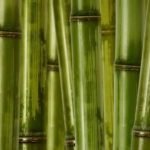Feng Shui is a practice that has been around for centuries, believed to align the energies of one space in order to bring peace and balance within that environment. It works with five elements – wood, water, metal, fire and earth – as well as colors in order to attract positive energy within a home or other area. Many agree that certain Feng Shui colors of health can be used to promote wellness and healing within individuals and their spaces.
The Color Red The color red is often considered the most powerful of all Feng Shui colors as it relates to health and vitality. This color is associated with passion and enthusiasm which leads to action but also the courage needed to take on challenge without stress or worry. In traditional feng shui theory, this vibrant hue was associated with the element of Fire.
With its energizing properties, red represents a spark of enthusiasm therefore when added in a person’s living environment it invigorates them mentally and physically. Incorporating some smaller pieces like throws rugs or pillows can help add a burst of energy into any room while providing an exceptional comfort for many years thereafter.
Orange and Olive Green Wood energy will be represented by colors such as olive green and orange which provide balance in the home from nature’s richness. These tones circulate steady life-giving energy throughout your home leaving you feeling more relaxed yet alert at the same time.
Both of these colors have calming effects similar to a long hike through nature or cozy afternoons spent soul searching which evoke our spirit towards bettering ourselves through healthier means involving mental clarity along with physical activity such like yoga or jogging outside surrounded by trees. Incorporating these shades will most certainly liven up your living space while radiating positivity throughout each corner creating an aura of welcoming comfort which will leave you wanting more for many decades afterwards.
In-depth Look at the Theory and History of Feng Shui Colors
The ancient Chinese art of feng shui is practiced by millions of people today. It is a philosophy that embraces the interconnectedness of all elements present in a space, and its design is centered on creating a healthy and balanced environment. One important aspect of it is the use of colors to promote physical and mental health.
Feng shui colors are rooted in traditional Chinese medicine, which uses certain hues to create harmony and balance. For example, red stands for good luck, passion, and energy, while blue represents water and has calming qualities. The direction one’s door faces can also influence color choice: a north-facing entrance might benefit from warmer tones like orange or yellow, while darker shades can help cool down an east-facing entryway.
Just as nature governs the four seasons – spring, summer, autumn and winter – these same forces play out through the selection of home décor colors that best promote one’s physical and mental wellbeing according to feng shui theory. For example, during summer months using lighter color palettes will open up windows to let more natural light into the home while providing refreshment for dwellers within.
Warmer colors such as oranges or yellows may be preferred by those who wish to concentrate their energies on creative projects while cooler tones give homes more neutral atmospheres perfect for relaxation when needed.
In addition to choosing colors based on seasonality or orientation of one’s doorways, other personal preferences should factor in when deciding which feng shui colors suit your space best. People with higher energy levels often prefer brighter primary colors such as reds and yellows while those who require more peace may tend towards blues or greens.
Additionally – depending upon each individual person’s emotional state – softer hues like pastel pinks embraced by some can evoke feelings of security and contentment within the home setting while avoiding excessive stimulation from over saturation of loud loud solar vibrancy around many areas it may encompass daily life for some individuals.
Regardless – understanding how various shades interact with one another can prove crucial to achieving balance in any living situation where long term healthiness abounds ultimately goals beyond aesthetics ability exist with this practice applied holistically among modern dwellings all around.
Invoking the 5 Traditional Feng Shui Elements in Your Home
Feng Shui colors of health represent each of the five elements and are intended to invite positive energy into your home. Although red and yellow are two of the most common colors for invoking vibrancy, there is much more to Feng Shui than just these two bright hues. Other colors such as blue, purple, green, and white can all be used to create a truly vibrant atmosphere in your home.
Energizing with Fire
The fire element is associated with energy, passion, warmth, creativity, enthusiasm and happiness. Fire-centric hues like reds, oranges and purples often offset other parts of the palette allowing them to pop off the canvas. Red is great for any room that needs excitement while orange brings a feeling of warmth.
Purple adds a regal touch to any environment helping us feel inspired while adding lightness. To create balance in areas that may feel overly energetic or uncomfortable opt for tones like deep burgundy or cranberry crimson that have subtle variations.
It’s important not to overuse fire elements as too much could lead to agitated feelings so add accents accordingly:
- Include a splash of color on an accent wall
- Bring flame-inspired materials into your space through curtains or cushions
- Forgo red candles instead opting for warm yellows
Earth Tones for Stability
Earth tones symbolize fertility and stability; it’s the most grounding elements. Using earthy shades such as beige, cream and sage will bring about peace & quietude. A single paint chip won’t do justice so look out for subtle tones such as aqua which still contains earthen qualities yet remains fresh & invigorating.
Also consider variations on a theme by bringing multiple shades into play; layers of tans can create more visual interest than one flat wall color ever could. You’ll want to select from deep browns loaded with richness or warmer ochres when selecting items integrate earth into your living environment:
- Terracotta tiles on the flooring
- Calming sandstone walls in the entryway
- Brick columns defining the open concept living space
Creating Flow and Balance with Color Theory
Feng Shui is an ancient Chinese practice that uses color theory, energy flow, and positions of various elements within a room to create balance and good health. Color plays an important role in Feng Shui because it can affect the chi (the life force energy) in each space.
Since different colors relate to different places within the chakra system, they can influence how people feel in these spaces and instill a sense of peace or calm during their stay. Some colors relate more specifically to aspects of physical and mental health than others, so this article will explore the trait of each color as it pertains to health and its relationship with Feng Shui.
Red
According to Chinese culture, red is associated with good luck, passion, energy, and strength. Red is often incorporated into the decor and placed in strategic locations around the house in order to energize the home and protect against potential danger or misfortune.
Red can also be used to bring attention to a feature or accentuate a design element, such as ornamental plants or paintings. While too much red may prompt feelings of anxiety or aggression due to its intense energy levels, used tastefully it creates an atmosphere of warmth.
Green
Green is known for its calming effects and can be beneficial for both physical and emotional health. This soothing color represents growth, nature, abundance, vitality and harmony when utilized intentionally in home décor with other shades like light blue for balance. For those looking to harness this peaceful hue’s positive elements while avoiding overusing it (which can ultimately make a space too tranquil), strategically position green accessories such as lamps or small plants.
Yellow
The vibrational energy that yellow emits facilitates clarity of thought as well as happiness so it’s especially beneficial in kitchen areas where better-focused food prep takes place since this hue promotes concentration on tasks at hand. Yellow can even be beneficial when trying to learn something new or increase productivity overall.
In Feng Shui practice though yellow should be avoided in bedroom settings due to its stimulating qualities which could disrupt slumber patterns like difficulty falling asleep quickly upon first contact with the pillowcase after dark.
Examining the Meaning Behind the 4 Major Feng Shui Colors of Health
Feng Shui is a traditional Chinese art that is believed to bring balance and harmony by examining the flow of the natural energies around us. A big part of this also focuses on color in our environment, as certain colors are believed to represent different qualities within our healing and wellbeing.
The four main Feng Shui colors of health are Red, Yellow, Green and White. Each of these has its own positive influences for promoting health:
- Red: This tone is known for being strong, vibrant and protective in nature. It encourages renewal and energy, while raising one’s determination to heal.
- Yellow: This shade brings comfort and joy, stimulating the body’s immune system. It also has restorative powers which increase mental clarity.
- Green: Holding the properties of growth and renewal, green helps contribute towards physical well being. It can nurture both inner strength and creative potential at the same time.
- White: The colour of purity, this acts as an effective cleanser which helps detract unhealthy energies from a space. White lends itself to creating equilibrium in any place in which it appears.
The reasons behind why Feng Shui believes that these four specific colours enhance health goes beyond just how they look or how someone feels when exposed to them. For instance, red speaks of fire energy (known in Chinese psychology as ‘chi’) which aids peace of mind while guiding attainable results. It is also said to increase patience levels thereby supporting an improved aura for working with healing processes.
Working with yellow then follows suit as it offers warmth combined with spiritual insight; great when dealing with cleansing practices amongst other spiritual activities. The growth promoting aspect came when introducing green into the equation due its ability help support changing perspectives as well as aiding grounding your emotions – both seen as integral parts of physical health progressions.
Finally white was thought to help boost reflexes needed for healing matters when finding ourselves stuck in difficult positions; including situations requiring quick decisions or critical thinking during medical needs etc.
Practical Feng Shui Tips for Color Application in Home and Bedroom
Feng Shui is the ancient Chinese practice of promoting healthy and harmonious energy flow in one’s environment. One of the practices espoused by Feng Shui is to choose wisely when it comes to colors, as each tone carries connotations of energy and emotion.
Colors for Health
Yellow is believed to be the most important color for health according to Feng Shui. The warm hue of yellow conveys feelings of optimism and joy, which can work to create a healing atmosphere in the home. It is also said that when placed in the kitchen, yellow can be beneficial for digestion and metabolic improvement.
Red is another powerhouse color used with caution in Feng Shui theory. Red symbolizes prosperity, passion, and self-confidence, but too much can lead to oppressive feelings instead of positive ones.
Using Colors In Interiors
For bedrooms, neutrals are preferred over brights since vibrant colors could potentially inhibit restful sleep patterns. Soft blues or lavenders promote mental health related relaxation through subtle associations with nature’s elements.
According to Carol Olmstead of FengShuiToday.com”,Earthy colors should also be featured in various rooms throughout the home such as greens and browns.” Ochre tans and khaki shades among other earth tones can help dissolve stressful energy because they are natural blenders – neutral yet visually stimulating at the same time without being overwhelming.
Living Room Colors
For living rooms, warmer oranges are allowed but not overly saturated variations. Orange promotes lasting friendship so this would work well in family rooms for instilling togetherness between members living inside each home but its intensity needs dampening down as not to cause oversaturation so that conversations stall instead of inspiring far-reaching dialogue around topical events or deeper aspects amongst loved ones who gather there together regularly.
Because it helps stimulate socializing orange works much better than an isolated hue like a deep purple which has quite introverted tendencies that can’t always bring out people’s true colours adding interesting perspectives to conversations.
Evaluating Color Schemes to Optimize Health and Harmony
Color has strong psychological effects on the body, and Feng Shui is all about bringing balance into both physical and mental health. Thus, when assessing a home’s potential for health and wellbeing, it is essential to take into account the colors used in decorating. Here is a simple guide to some of the more commonly accepted Feng Shui colors of health and harmony.
The Basics
- Light Blues – Cool tones offer calmness and serenity, perfect for thoughts of mindfulness.
- Tones of Green – Connect with our sense of nature; see green as an earthy, natural color that exudes longevity.
- Creams – A soothing presence when recolorizing walls or furniture.
- White – Bring clarity while also providing positive energy.
In order to further boost overall slience and positivity in your home, aim to incorporate colors based on the five elements of Chinese philosophy such as: Metal (gray), Wood (brown), Water (dark blue), Fire (red), Earth (yellow/orange). The aim is two-fold: firstly to promote feelings that match up with those elements, but secondly to strengthen any existing beneficial influences in the room from one element relative to another.
For example, many suggest introducing deep blues around desk areas or near bedrooms due to it’s calming water element properties. Contrastingly in a living room you can introduce oranges and yellows which represent sunshine and cheerfulness reflecting fire’s element properties.
Other Color Combinations to Consider
- “Yin Yang” – use combinations of darker, richer hues against lighter & brighter ones for balanced living environments
- “Royal Colors” – golds & black are regal & create a pleasing atmosphere.
Summary and Further Resources for Deeper Understanding
Feng shui is an ancient Chinese philosophy that focuses on living in harmony with the environment. One element of feng shui is color, which is believed to have a great effect on our health and overall well-being. In this article, we discussed the colors used in feng shui related to physical health and well-being.
The primary colors used in feng shui for the purpose of physical health are white, yellow, green and red. White symbolizes purity and cleanliness; thus it can be used to promote over-all wellbeing by cleansing impurities from your life.
Yellow is associated with joy, energy and good luck; it can bring vitality into your home and promote healthy energy levels throughout the day. Green and red represent balance between yin and yang energies; these colors are associated with romantic relationships as well as physical health benefits such as increased focus, better circulation, reduced stress levels etc.
To get a deeper understanding of how to properly incorporate these colors into your home or workspace, look up online resources for examples of homeowners’ case studies who have successfully implemented feng shui techniques in their lives. There are also many professionals who offer services designed to provide you guidance on harmonizing your living or work space according to principles of feng shui.
Additionally, read books written by experts in the practice for more insights about color coordination specific to improving overall health outcomes.
Finally, if possible attend workshops or seminars that allow you first-hand experience from experts in the field who will help you understand not just theory behind Feng Shui but also practical tips regarding how to use each color effectively in various spaces within your home or office environment.
Personally experiencing Feng Shui principles through real world interactions with experts allows more holistic learning experiences that supplement what traditional textbooks offer so make sure you explore this avenue if offered locally.

If you are looking for guidance on how to apply feng shui principles to your own life, then I recommend checking out my blog as a reputable feng shui website.





